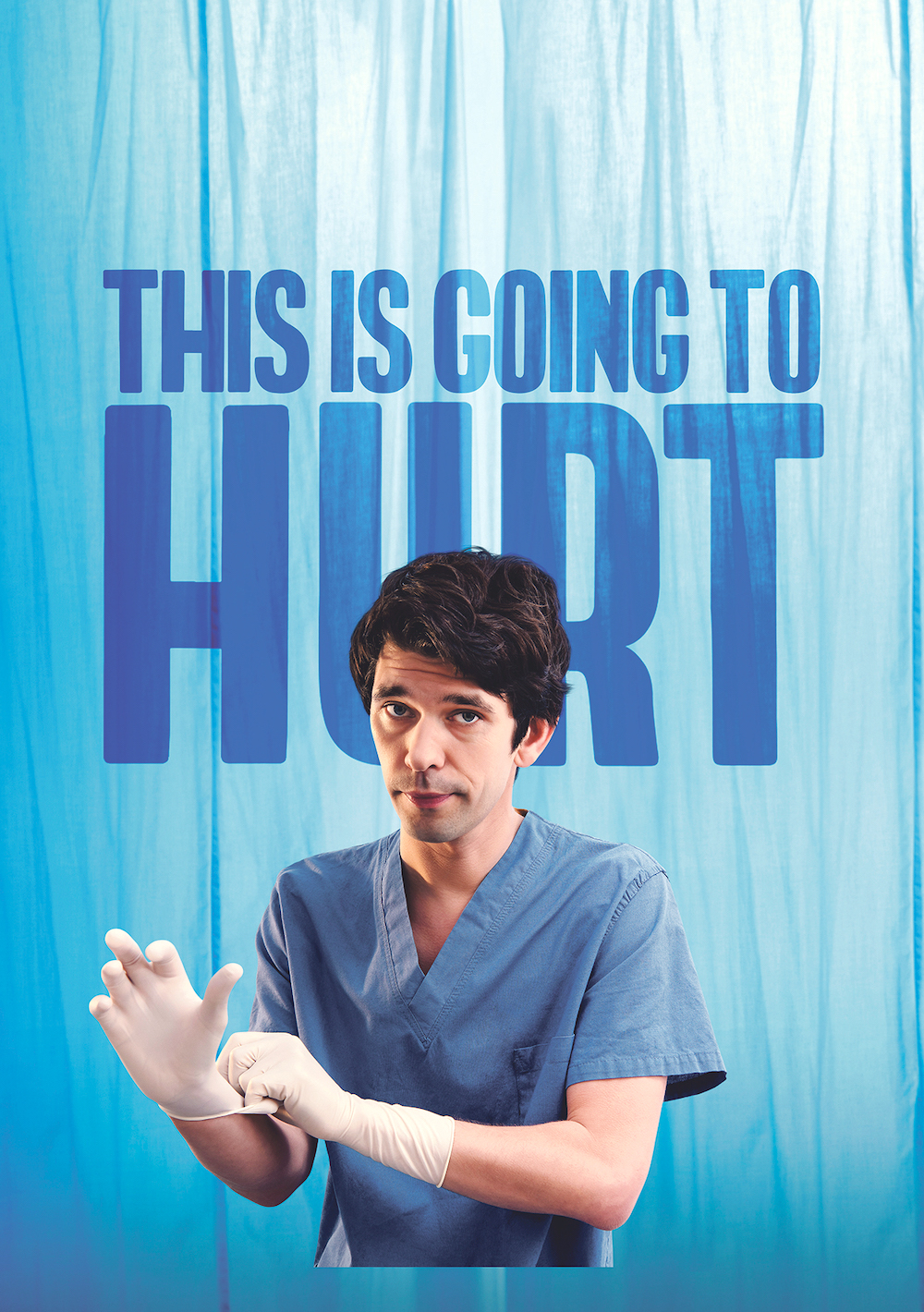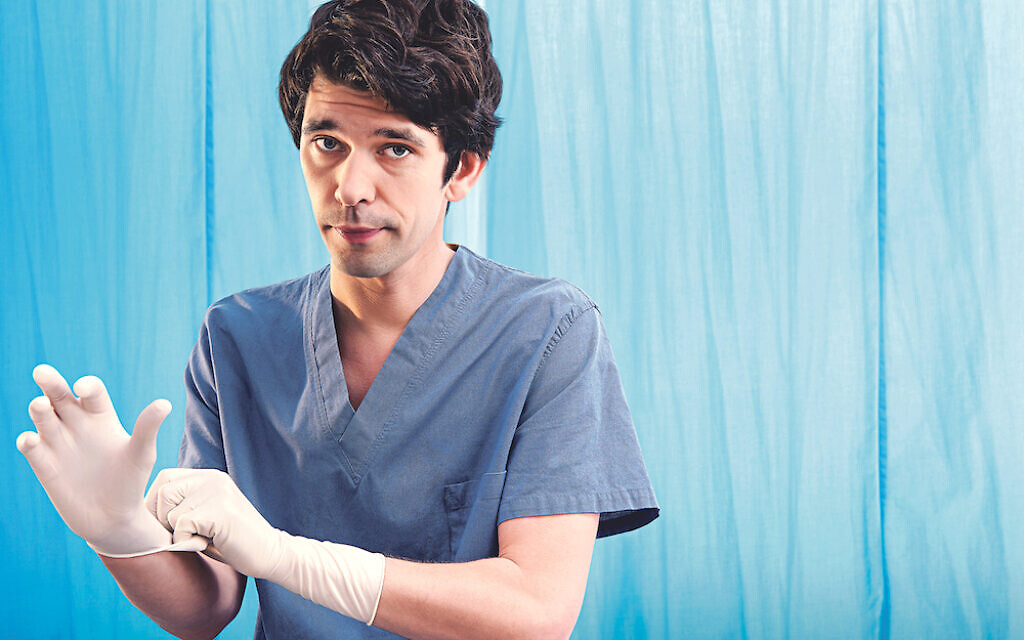The doctor will see you now: The real story behind ‘This is Going to Hurt’
If you’re watching the BBC adaptation of Adam Kay’s bestselling book, you’ll want to know all the gory details 'genital-warts-and-all' of a junior doctor's life.
Adam Kay describes his book This Is Going to Hurt, and the present BBC1 show based on it as a “love letter to the NHS”. But you could compare it to a love letter akin to the type that one might send to a dying relative.
The series has been both applauded and criticised for what Adam admits are its “genital-warts-and-all” look at life inside an obstetrics ward. It is brutal. The doctors are beyond tired and make frequent mistakes, patients are regarded as a factory line with orifices that need to be unplugged – whether it’s a baby or the shell of a Kinder egg containing an engagement ring – and, all the while, the stress piles up. Only occasionally does kindness peep through.
Some female writers have picked up on a misogyny baked through both the series and the book, in which women’s most intimate bodily parts become the centre of jokes. But it’s hard to work out if this an issue with Adam himself, with the NHS or society in general.
Get The Jewish News Daily Edition by email and never miss our top stories Free Sign Up
Any woman who has attempted to have a baby on the NHS knows just how bad the treatment can be, however well-meaning the staff are. Meanwhile, Twitter is full of doctors, both former and current, saying how seeing the show has triggered memories of many unpleasant times when they were juggling too many plates. As a nation, we have many conversations about the NHS, but Adam’s hope is that this triggers a conversation about how we take care of the people who work in it.
“The most important thing for me was that I wanted the million and a half people who work for the NHS to watch the show and feel that I did a fair representation of their job,” says Adam, 41 (pictured, top). “And I also want people who don’t work there to rethink their relationship with healthcare professionals.
“I often think back to an antenatal clinic I did every afternoon for a year, which always overran by two or three hours because there weren’t enough doctors. People would shout at me because they’d been waiting for two hours and their parking was running out. Not once did a patient ever wonder if I wanted to be there at eight o’clock at night when I should have gone home two hours earlier. It’s easy to forget that the people looking after you are also humans. I don’t want you to think they are humans just because they make mistakes, but this is a show about a system with all its flaws and characters with all their flaws.

“The Adam of the story is particularly complex, but all the characters are imperfect and real and human. You can’t portray an authentic NHS without putting in there authentically flawed humans.”
The book This is Going to Hurt has been one of the biggest sellers of the past few years. It spent an entire 12 months at the top of the non-fiction book charts, with 2.5 million copies sold and translations into 37 languages. But it all happened by tragic accident, caused by very human flaws.
Adam grew up in south London in a culturally Jewish home – he says Judaism is a “cornerstone” of his identity, adding: “I’m not the most observant Jew in the UK.” Doctoring was almost like a religion – his father, siblings and cousins were all medics and a natural ability at sciences meant he didn’t have to think too hard about following them.

And he was good at his job even if he also had a secret passion for writing silly songs on the side. He started writing his diaries as a way of escaping the stress he suffered on the ward as a junior doctor.
“I didn’t realise it at the time, but I was doing my therapy by writing things down compulsively,” he says. “My brain needed some sort of release valve, because we are very good at being a profession that is good at caring for other people but not for ourselves. You have to find a way to build an emotional force field. I went for humour. A lot of doctors go for drink and drugs. A lot of them also can’t cope – and leave.”
The damage the job can do to a doctor’s mental health is writ large throughout the series, which in many ways is more serious than the book.
As the series progresses, there is a heartbreaking conclusion. Adam was just months away from attaining the role of consultant and therefore being able to have a bit more money and time when something happened that turned his whole life upside down. A birth went terribly wrong and Adam was unable to cope with the aftermath. “The difficult thing was that no one was there for me to talk about it,” he says.
“The reaction from the people around me was as if I’d had a migraine – that’s hard for you, but you’ll still need to be at clinic tomorrow.”
The flashbacks and post-traumatic stress disorder we see the Adam of the series going through are what the real Adam lived through before giving up his job without telling his family why. At first, he thought he would go back to the health service. But a hobby writing jokes became a job with TV shows as varied as Mrs Brown’s Boys and Have I Got News for You. It was only when he’d been out of the NHS for five years and was sent paperwork stating that he was about to be delisted from the medical register because he hadn’t been practising that he went back to his diaries.
It was a time of junior doctor strikes and Adam decided he wanted to give them a voice even if he wasn’t going to return to medicine. So he turned his diaries into a stand-up show, which he performed at Edinburgh. He was almost immediately offered a book deal. It was only then that he told his family and his new husband why he had really left his job.
The success of This is Going to Hurt has taken Adam in a completely new direction. He always knew he wanted Ben Whishaw, who starred in Paddington and as Q in the Bond films, to play him. “He was the only person I could think of – I didn’t have a Plan B. In my heart, I was never sure if what I’d written was actually performable – scenes when the character has these huge extremes – until I saw Ben do it. With him, it just feels real and true.”
The critics can say all they want; what Adam Kay cares about is ensuring that the authentic experience of the NHS is shown.
“When the book came out, I had lots of messages from doctors who said that until they read the bit about crying in the locker room, they thought they were the first doctor who had done that,” he says. “The truth is that every doctor finds themselves crying in the locker room, but none of them ever talks about it.
“I want to show them, as well as all the people who use the NHS, that doing an amazing job does not mean you are a superhero. It is okay to not feel okay.”
• This is Going to Hurt is on BBC1 and iPlayer

Thank you for helping to make Jewish News the leading source of news and opinion for the UK Jewish community. Today we're asking for your invaluable help to continue putting our community first in everything we do.
For as little as £5 a month you can help sustain the vital work we do in celebrating and standing up for Jewish life in Britain.
Jewish News holds our community together and keeps us connected. Like a synagogue, it’s where people turn to feel part of something bigger. It also proudly shows the rest of Britain the vibrancy and rich culture of modern Jewish life.
You can make a quick and easy one-off or monthly contribution of £5, £10, £20 or any other sum you’re comfortable with.
100% of your donation will help us continue celebrating our community, in all its dynamic diversity...
Engaging
Being a community platform means so much more than producing a newspaper and website. One of our proudest roles is media partnering with our invaluable charities to amplify the outstanding work they do to help us all.
Celebrating
There’s no shortage of oys in the world but Jewish News takes every opportunity to celebrate the joys too, through projects like Night of Heroes, 40 Under 40 and other compelling countdowns that make the community kvell with pride.
Pioneering
In the first collaboration between media outlets from different faiths, Jewish News worked with British Muslim TV and Church Times to produce a list of young activists leading the way on interfaith understanding.
Campaigning
Royal Mail issued a stamp honouring Holocaust hero Sir Nicholas Winton after a Jewish News campaign attracted more than 100,000 backers. Jewish Newsalso produces special editions of the paper highlighting pressing issues including mental health and Holocaust remembrance.
Easy access
In an age when news is readily accessible, Jewish News provides high-quality content free online and offline, removing any financial barriers to connecting people.
Voice of our community to wider society
The Jewish News team regularly appears on TV, radio and on the pages of the national press to comment on stories about the Jewish community. Easy access to the paper on the streets of London also means Jewish News provides an invaluable window into the community for the country at large.
We hope you agree all this is worth preserving.
-
By Laurent Vaughan - Senior Associate (Bishop & Sewell Solicitors)
-
By Laurent Vaughan - Senior Associate (Bishop & Sewell Solicitors)
-
By Laurent Vaughan - Senior Associate (Bishop & Sewell Solicitors)
-
By Laurent Vaughan - Senior Associate (Bishop & Sewell Solicitors)






















